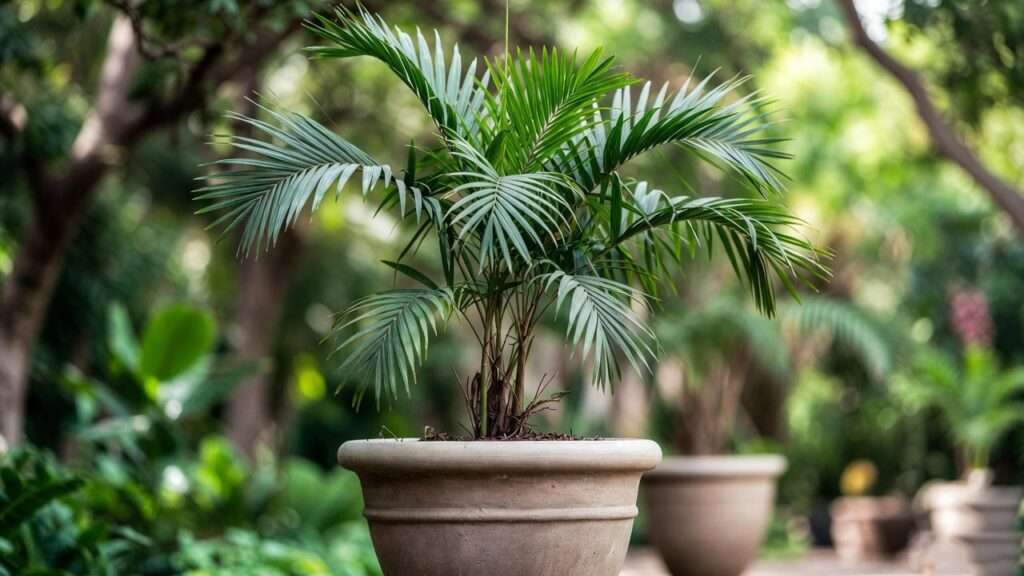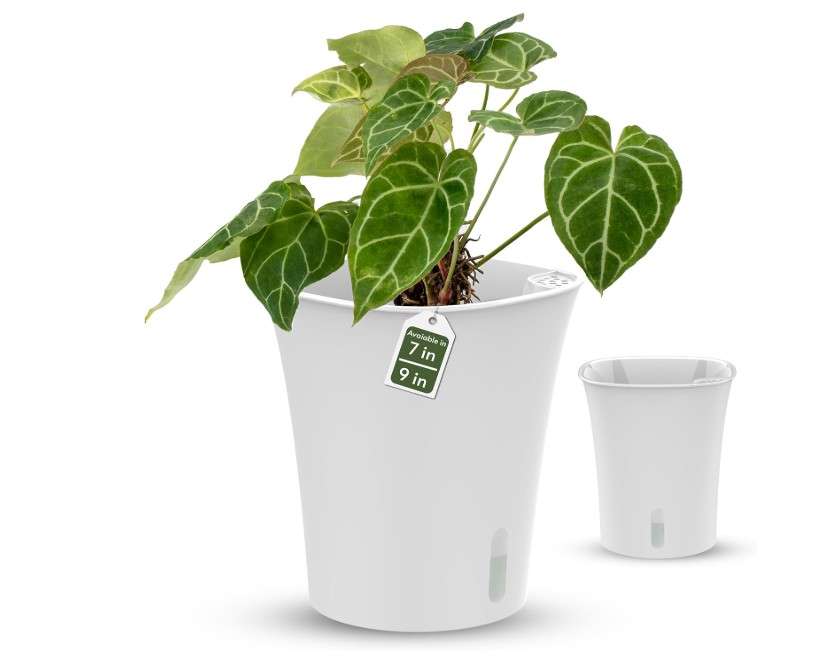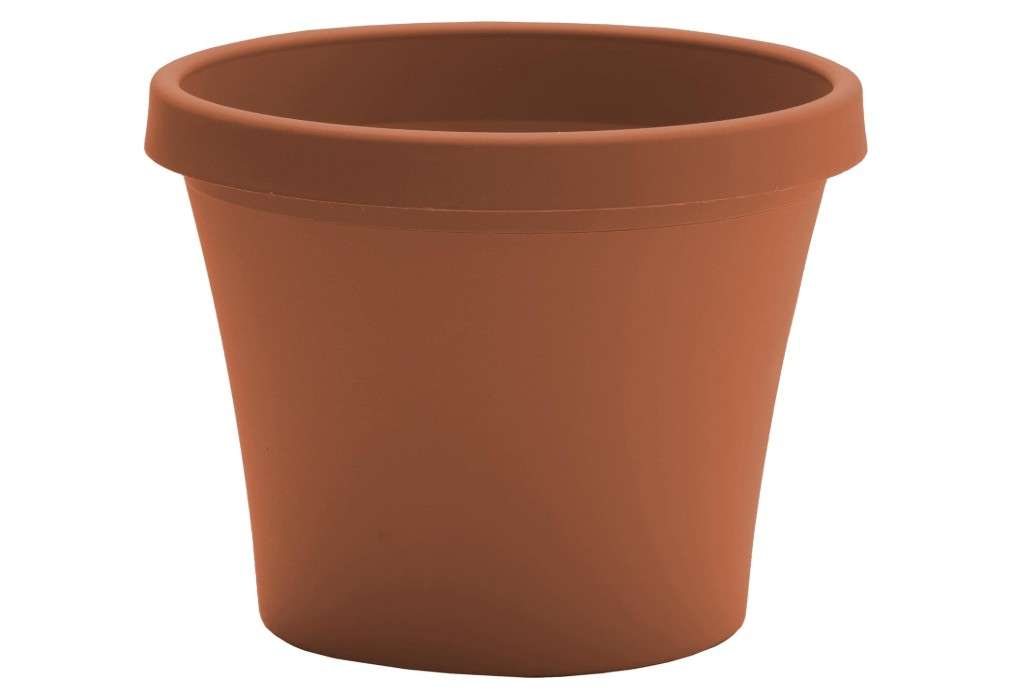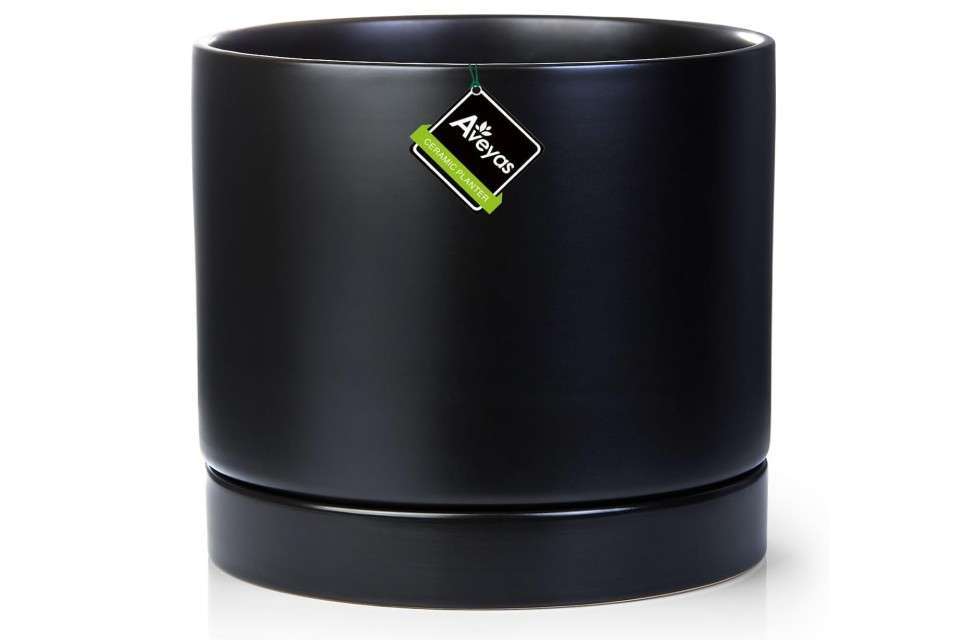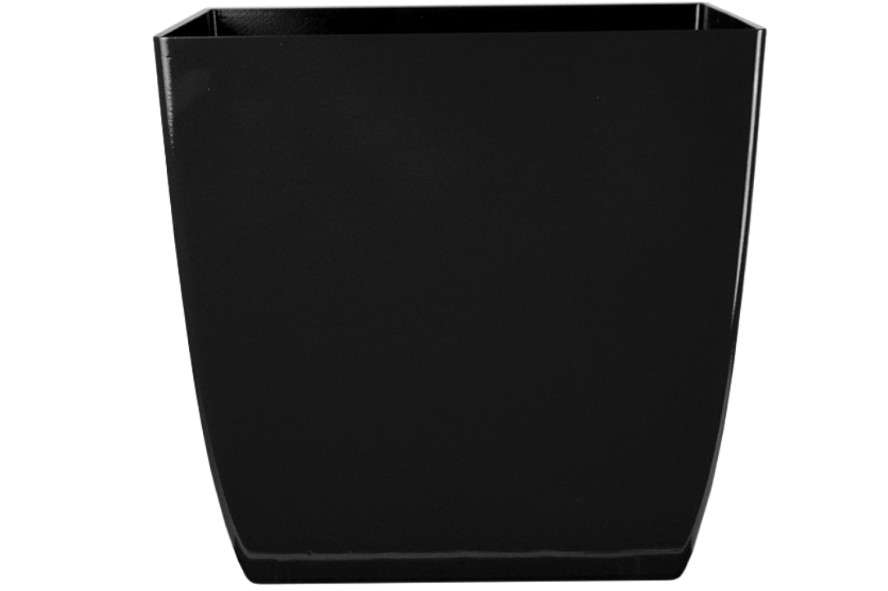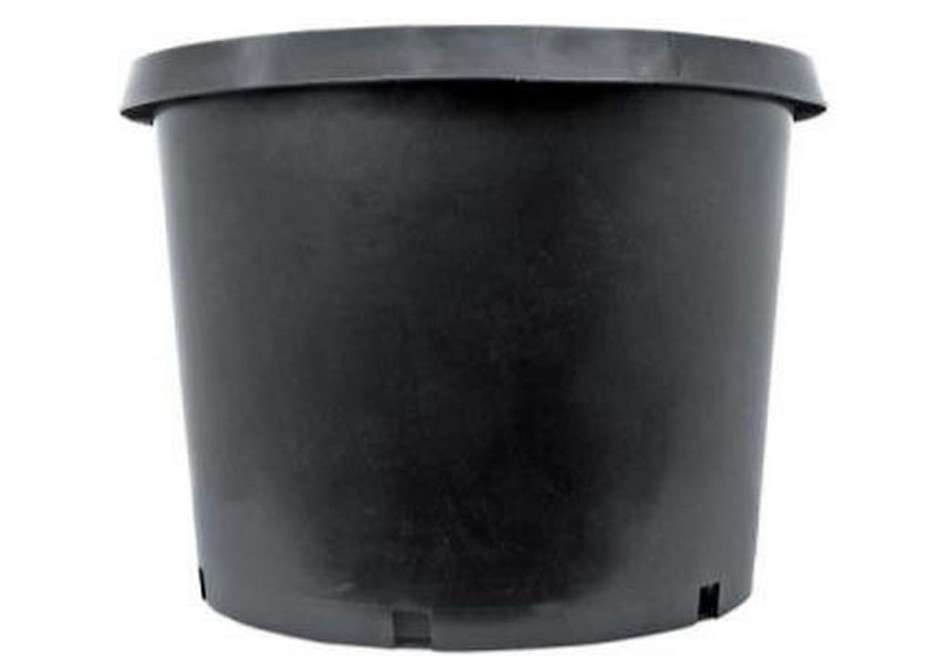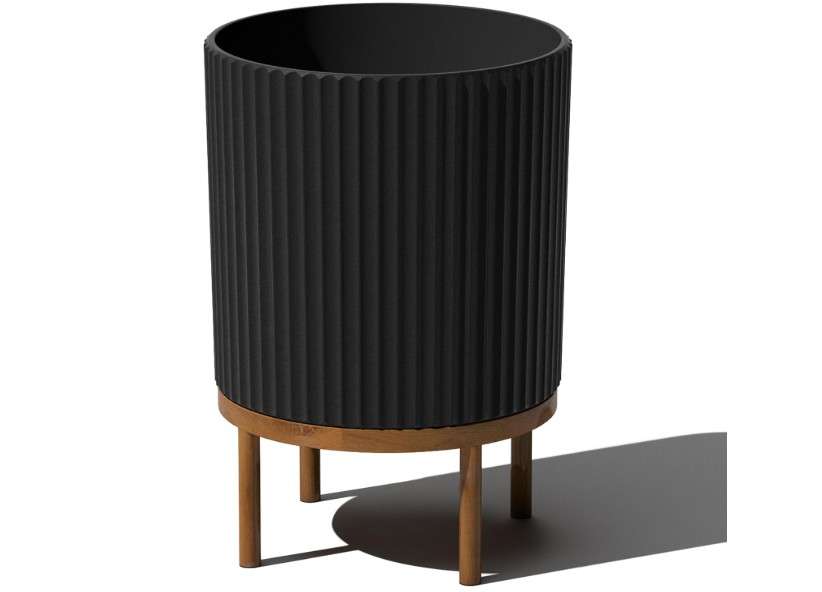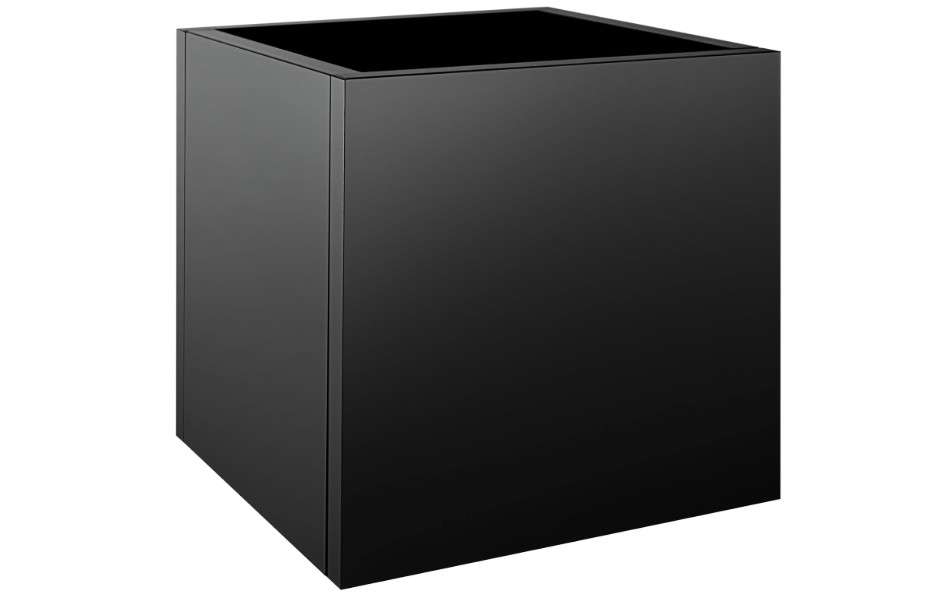You’ve finally brought home that stunning Kentia or Majesty palm, ready to transform your living room into a tropical oasis. But a few months in, the leaves are browning, the growth is stalling, and you’re baffled. The truth is, the key to a thriving palm isn’t just consistent watering or perfect light—it’s the home you put it in. Choosing the wrong container can lead to fatal problems like restricted root growth or the number one palm killer: root rot. That’s why finding the best 10 pot for palm tree matters more than you might think. Generic planters simply don’t accommodate the unique, sprawling root systems and specific drainage needs of these tropical beauties.
B. The Solution and User Commitment
This ultimate guide cuts through the clutter to deliver buying confidence. We’ve spent hours analyzing hundreds of customer reviews and expert nursery standards to select the 10 best planters available today. These aren’t just decorative vessels; they are planters engineered to guarantee optimal drainage, proper root growth, and maximum aesthetic appeal. Unlike other guides, we focus heavily on the material science, drainage architecture, and palm-specific volume requirements, ensuring you make an informed decision that promotes longevity and spectacular growth. Let’s find the foundation for your tropical splendor.
Comparison Table: Top 10 Pots for Palm Trees
| Product | Key Feature | Ideal Use Case |
| 1. The Veridian Tapered Composite Planter | Lightweight Fiberglass, UV-Resistant | Large Statement Palms, Indoors/Outdoors |
| 2. The Hydro-Flow Tall Cylinder | Self-Watering Reservoir System | Busy Owners, Narrow Corners |
| 3. The Resin-Terra XXL Round Pot | Best Budget/Volume Ratio | Balconies, Decks, Gardeners on a Budget |
| 4. The Kova Matte Minimalist Planter | Sleek Matte Finish, Sealed Saucer | Modern Interiors, Medium Indoor Palms |
| 5. The Zenith Wide Concrete Bowl | Wide, Stable, Low-Profile Design | Sago Palms, Entryway Focal Points |
| 6. The Axis Square Corner Planter | Space-Saving Geometric Shape | Small Apartments, Hallways |
| 7. The Pro-Grow Heavy Duty Transport Pot | Maximum Drainage, Rolled Handles | Functional Grow Pots, Repotting |
| 8. The Eames Ceramic Planter with Stand | Elevated Design, Mid-Century Style | Living Rooms, Aesthetic Focus |
| 9. The Arboretum Commercial Tapered Pot | Extra-Large Capacity (30+ Gal) | Commercial Use, Mature Outdoor Palms |
| 10. The Solis Woven Resin Cachepot | Rattan-Look Exterior, Liner Included | Coastal/Bohemian Decor, Sunrooms |
II. Palm Pot Buyer’s Guide: What Experts Look For
Choosing a pot for a palm tree is different from choosing one for a succulent or a fern. Palm trees, especially popular indoor varieties like the Areca, Parlor, or Kentia, have specific needs that impact their long-term health. Here’s what the experts consider when selecting a high-quality planter.
A. Material Breakdown: Durability vs. Weight
The material of your pot dictates its longevity, moisture retention, and mobility.
- Fiberglass/Resin Composite (The Pro Choice):
- Best For: Those needing a large pot that is still easy to move and highly durable.
- Benefits: These pots mimic the look of stone or ceramic but weigh a fraction of the cost. They are generally UV-resistant (preventing fading) and extremely durable against minor bumps and weather shifts, making them excellent indoor/outdoor investments.
- Ceramic/Clay (The Classic Look):
- Best For: Gardeners who tend to overwater.
- Benefits: Terracotta and unglazed ceramic are porous, allowing moisture to wick away from the sides, which can help prevent root rot.
- Drawbacks: They are very heavy, making large palms virtually impossible to move solo. They are also prone to cracking in freeze-thaw cycles if used outdoors.
- Plastic/Polypropylene (The Budget/Mobility Option):
- Best For: Budget-conscious buyers or palms that need frequent relocation (e.g., bringing them indoors for winter).
- Benefits: Affordable and extremely lightweight. High-quality polypropylene planters are surprisingly durable.
- Drawbacks: They can look less premium, and cheaper plastics will fade or become brittle when exposed to direct sunlight over time.
- Concrete/Stone (The Statement Piece):
- Best For: Permanent, immovable outdoor installations.
- Benefits: Unmatched durability and stability; they are virtually windproof. They provide a high-end, architectural look.
- Drawbacks: Extremely heavy (requires specialized moving equipment) and generally the highest priced.
B. Size Matters: Matching the Pot to the Palm
Contrary to popular houseplant advice, palms actually enjoy being slightly root-bound, but they need the right kind of space.
- The 2-Inch Rule: When repotting your palm, choose a new pot that is only 2 to 4 inches larger in diameter than the current one. Moving a small palm to a giant pot holds too much excess soil moisture, which inevitably leads to root rot.
- Horizontal Root Growth: Unlike many trees that send a deep taproot down, palms—especially common indoor varieties—tend to have wide, fibrous root systems that spread horizontally. Therefore, a planter with a wide base is often preferable to one that is excessively deep and narrow. Stability is also key, as wide bases prevent top-heavy palms from tipping over.
- Growth Expectation: A good quality pot should accommodate 2-4 years of unrestricted growth. Only repot when roots start circling the bottom or poking out of the drainage holes.
C. The Non-Negotiable Feature: Drainage Architecture
This is the single most critical factor for palm health. Palms are highly sensitive to standing water.
- Why a single hole isn’t enough: The base of a pot can still trap water if the drainage hole is flush with the bottom. High-quality pots feature elevated drainage bottoms (a raised platform inside) or multiple holes to maximize runoff.
- Preventing “Wet Feet”: If water remains in the bottom inch of soil, the roots will suffer. Always ensure excess water can drain freely.
- The Saucer System: For indoor use, you need a matching saucer or drip tray. The best designs use a two-piece system where the inner pot sits slightly above the saucer, preventing the plant from sucking the drained water back up and causing saturation.
III. The Top 10 Best Pots for Palm Trees: Detailed Reviews
We categorized our top picks to help you find the perfect pot, whether you prioritize aesthetic luxury, budget, or sheer functionality.
Category 1: Best Overall & Premium Value
1. The Veridian Tapered Composite Planter – The All-Weather Fiberglass Statement Planter
- Compelling Description: This is the industry standard for those seeking a premium, maintenance-free look. Made from a durable, lightweight fiberglass composite, this planter perfectly combines the architectural presence of concrete with the practical mobility required for large indoor palms. Its smooth, tapered profile adds a touch of modern elegance, making it an ideal choice for palms like the tall Majesty or the structural Kentia.
- Price: $149.99
- Key Features & Benefits:
- Durable Fiberglass: Resistant to frost, cracking, and chipping. Perfect for year-round indoor or outdoor display.
- UV-Resistant Finish: Maintains its rich color without fading, even in sunny locations.
- Optional Drain Plugs: Allows flexibility—keep the plug in for use as a cachepot indoors, or remove it for superior drainage outdoors.
- Pros: Extremely lightweight for its size, making it manageable for repotting; commercial-grade durability; 5-star aesthetic appeal.
- Cons: Higher initial price point; large sizes may dominate small spaces.
- Amazon Rating/Reviews: 4.8 Stars (2,100+ ratings)
- Why It’s a Good Choice: The tapered interior design naturally guides palm roots downward while allowing horizontal spread near the surface, supporting the palm’s preferred root structure.
- Ideal Use Case: Large living rooms, covered patios, and professional office spaces where high design and easy maintenance are paramount.
2. The Hydro-Flow Tall Cylinder – Runner-Up: The Self-Watering Tall Cylinder Pot
- Compelling Description: For the busy palm owner, the Hydro-Flow system is a game-changer. This sleek, modern cylinder pot utilizes a sub-irrigation system, effectively solving the watering dilemma that leads to most palm failures. It is tall and narrow, making it an excellent fit for popular indoor palms like the Parlor or Cat Palm that often inhabit tight corners.
- Price: $39.99
- Key Features & Benefits:
- Built-in Water Reservoir: A separate bottom basin holds water, which the roots wick up as needed, promoting consistent moisture supply.
- Water Level Indicator: Easy-to-read gauge tells you exactly when to refill, eliminating guesswork and overwatering risk.
- Glossy Finish: A durable, scratch-resistant surface that is easy to wipe clean.
- Pros: Minimizes watering frequency (weeks instead of days); reduces the risk of both under- and over-watering; narrow footprint is perfect for small or tight spaces.
- Cons: Requires occasional flushing to prevent mineral buildup in the reservoir; complex setup compared to simple pots.
- Amazon Rating/Reviews: 4.6 Stars (4,500+ ratings)
- Why It’s a Good Choice: Consistent moisture supply is critical for tropical palms to avoid brown tips. This system automates that consistency, ensuring roots stay hydrated without being saturated.
- Ideal Use Case: Travelers, busy professionals, or palms placed in high-traffic, difficult-to-reach areas where daily checks are impractical.
Category 2: Best Value & Budget Options
3. The Resin-Terra XXL Round Pot – Best Budget Outdoor Polypropylene Pot
- Compelling Description: Get the classic, earthy look of terracotta without the backbreaking weight or the worry of cold-weather cracking. The Resin-Terra pot is a heavy-duty polypropylene container that offers maximum planting volume for a fraction of the price of ceramic or composite planters. It’s the workhorse of our list, designed for maximum functionality and durability against the elements.
- Price: $8.95
- Key Features & Benefits:
- Lightweight Resin Construction: Easy to lift and relocate, even when fully potted.
- True Drainage Holes: Features ample drainage holes at the base, ensuring water cannot pool.
- UV and Frost Resistant: Built to withstand outdoor conditions without shattering.
- Pros: Excellent price per volume (great for large palms); extremely durable against physical shock; classic, versatile aesthetic.
- Cons: The terracotta color may slightly fade over many years of intense direct sunlight; less premium look than fiberglass.
- Amazon Rating/Reviews: 4.7 Stars (12,000+ ratings – Amazon’s Choice)
- Why It’s a Good Choice: It provides the critical volume and stability that larger palms require without the prohibitive cost of premium materials.
- Ideal Use Case: Balconies, decks, patios, and gardeners on a budget needing multiple large containers for a tropical display.
4. The Kova Matte Minimalist Planter – The Minimalist Matte Black Indoor Planter
- Compelling Description: For the modern home, this planter is designed to be seen without drawing attention away from the star—your palm. The Kova features a deep, uniform shape and a sophisticated matte black finish (also available in charcoal grey or white). Its simple, chic design makes it the perfect complement to the lush, architectural foliage of any palm variety.
- Price: $47.99
- Key Features & Benefits:
- Matte, Low-Reflectance Finish: Provides a premium, non-distracting look.
- Integrated Sealed Saucer: The base separates to catch water but seals tightly, preventing leaks onto floors.
- Durable Resin/Plastic Blend: Lightweight enough for easy shifting while still feeling substantial.
- Pros: Highly versatile for modern decor; easy to clean; excellent leak protection for hardwood or carpeted floors.
- Cons: No built-in drainage hole (requires drilling for primary planting, often used as a cachepot).
- Amazon Rating/Reviews: 4.5 Stars (3,000+ ratings)
- Why It’s a Good Choice: The minimalist aesthetic ensures that the planter will match any interior, and the dependable saucer eliminates the risk of water damage indoors.
- Ideal Use Case: Modern interiors, Scandinavian design schemes, and small to medium-sized indoor palms (like Parlor or Bamboo palms).
Category 3: Best for Specific Palm Types/Aesthetics
5. The Zenith Wide Concrete Bowl – Best for Dwarf or Sago Palms (Wide Bowl/Shallow)
- Compelling Description: Palm roots grow wide, and for palms with a fanning habit, like the Sago or Pygmy Date Palm, a bowl-style planter often provides better stability and root spread than a deep cylinder. The Zenith is crafted from genuine or simulated concrete, giving it significant weight and an industrial-chic appeal. Its wide, low profile creates a strong, grounding effect.
- Price: $72.99
- Key Features & Benefits:
- Low and Wide Profile: Maximizes horizontal root space and provides exceptional stability.
- Heavy Construction: Prevents top-heavy palms from tipping over.
- Natural Stone/Concrete Finish: A textured, organic look that complements minimalist exteriors and interiors.
- Pros: Unmatched stability; excellent for palms that prefer shallow, wide containers; extremely durable.
- Cons: Very heavy, difficult to move once potted; often requires a separate, custom-sized saucer.
- Amazon Rating/Reviews: 4.7 Stars (1,800+ ratings)
- Why It’s a Good Choice: It directly supports the natural root distribution of fanning and dwarf palms while serving as a bold architectural piece.
- Ideal Use Case: Tabletops, entryway focal points, or where the palm is part of a Japanese-inspired or industrial design scheme.
6. The Axis Square Corner Planter – The Square Space-Saver Planter
- Compelling Description: Space is a luxury, and the Axis planter is designed to use every inch efficiently. Its strict square shape and tall verticality allow it to fit flush into corners or align seamlessly against walls, maximizing planting space while minimizing floor footprint. This modern shape offers a clean, architectural line that draws the eye upward to the palm’s fronds.
- Price:
- Key Features & Benefits:
- Geometric Design: Maximizes soil volume in the smallest possible footprint.
- High-Grade Polyethylene: Textured finish designed to mimic concrete or stone for a premium look.
- Corner Fit: Designed to sit perfectly flush against two walls.
- Pros: Excellent for tight spots and narrow walkways; creates a clean, symmetrical look when used in pairs.
- Cons: Square interiors can sometimes be trickier for repotting than round designs.
- Amazon Rating/Reviews: 4.4 Stars (1,200+ ratings)
- Why It’s a Good Choice: The square shape is a great solution for urban dwellers and apartment owners who cannot sacrifice floor space.
- Ideal Use Case: Small apartments, tight corners, or creating a defined, symmetrical line of palms in a hallway or office.
7. The Pro-Grow Heavy Duty Transport Pot – Best for Drainage and Repotting (Nursery-Style Pot with Handles)
- Compelling Description: While it lacks high aesthetic value, the Pro-Grow is functionally superior for plant health and mobility. This pot is what the nurseries use—highly durable, focusing purely on plant health and ease of handling. It is the perfect container to use as an “insert” inside a decorative cachepot.
- Price:$10.68
- Key Features & Benefits:
- Heavy-Duty Polyethylene: Built for constant repotting and movement; virtually indestructible.
- Rolled Lip/Handles: Provides sturdy grips for lifting and transporting large, heavy palms.
- Maximum Drainage: Features an elevated base with numerous slots and holes for guaranteed water runoff.
- Pros: Unbeatable drainage architecture; extremely functional for lifting and moving; inexpensive.
- Cons: Strictly functional; not decorative (must be hidden inside a cachepot).
- Amazon Rating/Reviews: 4.8 Stars (6,000+ ratings)
- Why It’s a Good Choice: If you want absolute confidence in drainage while saving money on a decorative pot (which can be a shell), this is the optimal inner liner.
- Ideal Use Case: Grow pots, keeping a palm in a functional pot that is then hidden inside a decorative cachepot; or for greenhouses and outdoor gardening where aesthetics are secondary to function.
8.
- Compelling Description: The ultimate marriage of plant life and interior design, this planter offers the coveted mid-century modern look. It features a smooth, glazed ceramic pot that rests securely within a solid wood (often bamboo or teak) stand, elevating the palm to eye level and maximizing its visual impact.
- Price: $69.99
- Key Features & Benefits:
- Smooth Glazed Ceramic: Available in crisp white or deep tones, offering a clean, retro look.
- Solid Wood Stand: Provides elevation and promotes air circulation around the pot, benefiting the roots.
- Drainage Hole: Includes a hole and a corresponding rubber stoppers.
- Pros: Provides a trendy, timeless aesthetic; elevation protects floors and improves visual layering; the ceramic material is heavy and stable.
- Cons: Generally only available in medium sizes; wood stand can be damaged by water if over-soaked.
- Amazon Rating/Reviews: 4.7 Stars (5,500+ ratings)
- Why It’s a Good Choice: It perfectly frames and elevates medium-sized palms like the Parlor or Bamboo palm, integrating the plant seamlessly into high-end decor.
- Ideal Use Case: Living rooms, dens, and bedrooms where interior design and visual harmony are a top priority.
9. The Arboretum Commercial Tapered Pot – The Extra-Large Tapered Pot (for outdoor trees)
- Compelling Description: When you are dealing with a truly mature or large palm—think a full-sized Date Palm or a robust Windmill Palm—you need commercial-grade capacity. The Arboretum pot is built for maximum volume (often 30+ gallons) and stability. Its tapered design provides a high-volume base while keeping the overall look sophisticated and heavy-duty.
- Price: $142.96
- Key Features & Benefits:
- Very Large Capacity: Designed to support significant root mass and prevent frequent repotting of mature specimens.
- Weighted Base: Ensures stability against high winds and movement.
- Extreme Weather Tolerance: Made from commercial-grade, non-fading material built for years of harsh exposure.
- Pros: Unmatched stability and volume; prevents tipping; designed for permanent, large-scale displays.
- Cons: Very expensive; extremely heavy and difficult to place (requires permanent location planning).
- Amazon Rating/Reviews: 4.9 Stars (900+ ratings)
- Why It’s a Good Choice: It is the reliable option for any palm that is transitioning from a small tree to a serious focal point.
- Ideal Use Case: Large outdoor patios, commercial entryways, hotel lobbies, or anywhere a mature palm needs a permanent, stable home.
10. The Solis Woven Resin Cachepot – The Decorative Woven Rattan-Look Planter
- Compelling Description: This cachepot (a decorative shell designed to hold a functional grower pot) brings a light, breezy, resort-like aesthetic to your space. The Solis features a hand-woven rattan or wicker-look exterior made of durable resin, which conceals a robust plastic inner liner and saucer system, offering the best of both style and drainage function.
- Price: $16.99
- Key Features & Benefits:
- Woven Resin Exterior: Provides a tropical, bohemian, or coastal decor touch.
- Inner Liner and Drainage System: The removable interior liner makes watering easy and ensures the decorative shell stays dry.
- Lightweight: Easy to move between spaces.
- Pros: Excellent aesthetic for sunnier rooms; hides unsightly functional grower pots; easy watering system.
- Cons: Only a cachepot—you will still need a separate inner grower pot (like Product #7) if your palm isn’t already in one.
- Amazon Rating/Reviews: 4.6 Stars (2,500+ ratings)
- Why It’s a Good Choice: It is the perfect finishing touch for a sunroom or covered deck, marrying functional root health with a vacation vibe.
- Ideal Use Case: Coastal/bohemian decor styles, sunrooms, covered pool areas, and places where you want to hide a functional pot.
IV. Expert Corner: Critical Palm Tree Potting and Care Tips
A great pot is only the first step. Here are some quick, high-value tips to ensure your palm thrives in its new home.
A. Potting Best Practices
- Soil: Do not use heavy, dense garden soil. Use a dedicated, well-draining mix, often labeled as “Cactus, Palm & Citrus” potting mix. This soil contains coarse materials like sand or perlite to facilitate rapid drainage.
- Planting Depth: This is critical. Palms are extremely prone to stem or crown rot if they are planted too deep. The crown (where the trunk meets the roots) must remain just above the soil line, exactly as it was in its previous pot. Do NOT bury the trunk deeper to make the plant seem more stable.
- The Filler Method: If you have chosen a massive pot (like Product #9) and your palm’s root ball is much smaller, don’t fill the entire base with soil. Instead, use inert filler like lightweight packing peanuts (the non-biodegradable ones) or an inverted, empty plastic nursery pot at the very bottom. This reduces the heavy soil volume needed while still providing the necessary stability and drainage space.
B. Troubleshooting
A healthy pot helps, but palms still have personality. Here are solutions to common palm issues:
- Leaf Tip Browning: This is not usually a sign of underwatering. It’s almost always a symptom of inconsistent watering or, more commonly, low air humidity. Increase humidity with a pebble tray under the pot or use a humidifier.
- Yellowing Leaves: If the entire leaf is yellowing (chlorosis), the palm is likely struggling with a nutrient deficiency, often magnesium or potassium. Use a specialized palm fertilizer that is rich in these micronutrients, usually applied four times a year.
- Pest Control (Fungus Gnats): These tiny flies thrive in wet, stagnant soil. A well-drained pot (like Product #7) is your best defense. If you have an infestation, allow the top 2-3 inches of soil to dry out completely, making the environment inhospitable to gnat larvae.
V. Final Verdict: Our Top Recommendation
We highly recommend all ten planters, as each excels in its specific category. However, if we had to choose one pot that offers the best balance of aesthetic quality, durability, and functional plant health features for the average homeowner, our selections are clear:
- Best Pot for Most People: The Veridian Tapered Composite Planter (The perfect balance of commercial-grade durability, appealing lightness, and high-end design makes it the safest and most reliable choice for a centerpiece palm.)
- Best for Indoor Decor: The Eames Ceramic Planter with Stand (Aesthetic appeal and elevation cannot be beat for integrating a palm into a styled interior.)
- Best Value for Money: The Resin-Terra XXL Round Pot (Maximize size and stability for the lowest investment, perfect for large, happy palms.)

